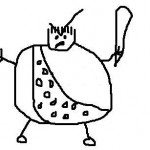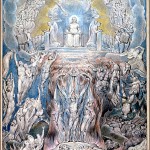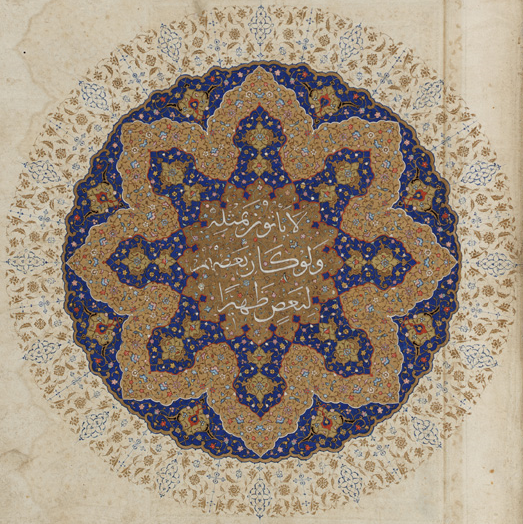
Man looketh on the outward appearance, but the Lord looketh on the heart. -1 Samuel 16:7
Clothes make the man. Naked people have little or no influence on society. -Mark Twain
In preparation for my next series, on how evangelical-fundamentalism instills homophobia in its youth, I’m going to talk for a moment about fundamentalist aesthetics. Every once in a while, I run into fundamentalist women while shopping. The experience is always a little jarring. It’s a bit like finding yourself accidentally behind one-way glass: you can see them, but they can’t see you. I can identify women by denominational clusters, especially Apostolic (the dress code my church followed). I wonder now how many ex-fundamentalists I used to pass in the grocery store, feeling conspicuous in my floor-length denim skirt, so certain that no one there understood why I was dressed that way. My church assured us constantly that “the world” couldn’t possibly understand our modest dress. It never occurred to me that “the world” might actually consist of ex-fundamentalists, that there might be more people recognized my clothing for what it was than people who didn’t.
Gendered aesthetics were and are hugely important in evangelical-fundamentalist culture. When we were praised, it was for looking like “real women.” When outsiders were criticized, it often took the form of a cliche: “The devil has so confused people that they don’t even know if they’re men or women. When you see them in the street, you can’t tell the difference.”

As a kid, I had very explicit images in my mind of what men and women “ought” to look like. It could be boiled down to basic arithmetic:
Short hair + pants = male.
Long hair + skirts = female.
Short hair + skirts = ABOMINATION.
Long hair + pants = ABOMINATION.

There was a problem. The system was watertight, really – boys’ hair had to be above the ears, and women’s had to be below their shoulders. Only Scottish men in parades could get away with kilts, and long hair on a man was “unnatural” as per Paul. The problem wasn’t that the silhouettes that constituted “male” and “female” in my church were inconsistent. The problem was that I found that last combination very, very attractive.

For a long time, I thought that being attracted to long-haired men meant I was definitely harboring a demon. It was cruelly consistent: all the guys I crushed on had hair below their ears. Was it a subversive, subconscious rebellion? Was it an innate personality quirk? I have no idea. All I know is that teaching myself the above formulae did nothing to eradicate my attraction to the long hair + pants crowd. I didn’t just want to date long-haired men, I wanted to be a pants-wearing long-haired woman.

In the end, it worked out. I became a jeans-wearing long-haired woman. My first boyfriend (and now fiance) had a ponytail when we met. He doesn’t anymore, but at the time it just served as a handy little reminder that this guy was nothing like the patriarchal control freaks I could have expected to marry in the Message.

What does this have to do with homophobia? With anything, really?
Evangelical-fundamentalist Christianity is obsessed with appearances. You may not be able to tell whether or not a woman has the Holy Spirit if she’s dressed like an Apostolic maternity model, but you can definitely tell that the hussy in skinny jeans doesn’t have it. My church literally believed that people who wore black, chains, eyeliner, unnatural hair colors, non-gender-conforming outfits, and piercings were possessed by demons.
My church was convinced that you could pinpoint sinners, especially homosexuals, by their clothes. If a woman was “dressed like a man,” she was possessed by a demon of lesbianism. If a man wanted to wear a necklace, he was clearly tipping over the edge of the gay cliff. My church believed that homosexuality was a performance a person put on because of demonic inspiration, and you could see the signs in the way they dressed. Never did it occur to them that a gay or lesbian person could be sitting in their congregation, dressed in a checkered shirt and khakis or a Laura Ingalls dress, trying not to let anyone know who they really were. Never did it occur to them not all homosexual people are Goths, promiscuous, or connoisseurs of death metal music.
To accept that such people exist would be to shatter the myths that keep their children afraid of “catching” homosexuality – after all, if it doesn’t send you down a miserable slope to heroin-addicted, AIDS-riddled hell, then how can admitting you’re gay be such a bad thing? In order to demonize a group, you first have to make its members visible. Even though they were just plain wrong, they stuck to their story about the obvious perversion of homosexual people in dress and behavior. It was the only way to keep us from facing the fact that adhering to the skirt/pants long/short dichotomy didn’t make us better than anyone else.















